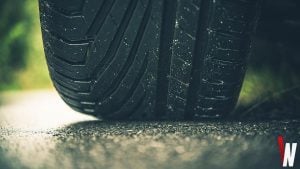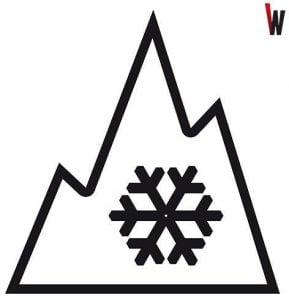What Type of Tires Do You Need?
In most areas of Canada, September means the seasons are officially starting to change, temperatures are cooling down, the leaves are changing colour, and winter is approaching. With that in mind, it’s time to start thinking about buying a set of new tires for your car, truck or SUV, especially if you live somewhere with a winter tire law, like the province of Quebec.
In other provinces, such as Ontario, you can receive a discount on your insurance if you use the appropriate seasonal tires, but you need to make sure you purchase the right tires. With that in mind, we’ve put together 3 simple things to know about tires before buying- size, season, and specialty.
Types of tires: know your size
These are the three main numbers of your tire size – width, profile, and rim size.
Your tire size can be found in two places, on the sidewall of your tire, or on the sticker inside the door of your car. There can be a lot of numbers on the side of your tire, but you only really need to know three of them to know if a tire will fit your car.
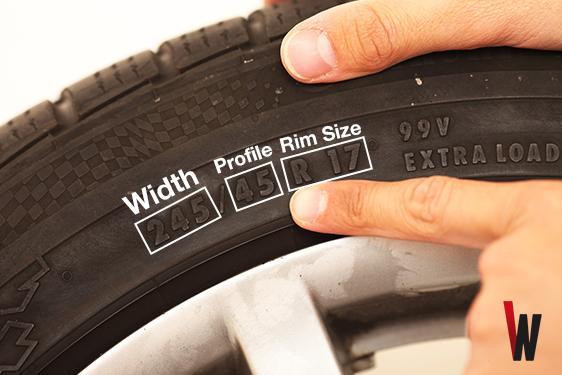
Width – The first number in your tire size is the width, it’s pretty straight forward, it signifies the width of your tire in millimetres. Width of a tire is important to know because it can change how your car corners, typically the wider the better is recommended for an improved corner grip. However, be careful because if your tires are too wide, they may not fit your rims.
Profile– The second number in your tire size is the profile, or aspect ratio. This represents how tall or how thick the tire is, the number represents a percentage of the width. In the example image, this tire is 45% as tall as it is wide. This number is important as it will help you understand how tall your overall diameter is – a key factor in fitting a new set of wheels and tires to your car.
Rim Size– The final number is the applicable rim size of the tire. In the above case, this tire is made to fit a 17-inch wheel, so the final number is R17. If your wheels are 16 inches or 18 inches, this tire will not fit.
Types of tires: know your season
It’s very important to know when you’ll be driving on your new tires. There are three main categories of seasons which can be applied to tires. We’ll explain all three here, so you can make an informed decision about your needs.
Summer tires
Summer tires are usually the best for performance and grip on warm and dry roads. Their rubber compounds are usually softer than an all-season tire, but not as soft as a winter tire. The tread blocks are usually farther apart to allow more of the tire to lay flat on the road surface. This allows the tire to remain in contact with the road as long as possible, however there are some aspects of summer tires you should know. For one, the rubber compound is so soft that it can solidify in cold temperatures, this can lead to your tires slipping on snow and ice. They are not recommended for winter use.
All-season tires
Bridging the gap between summer and winter are the all-season tires. Most cars will roll out of the factory on all-season tires – they are versatile and often affordable. All-season tires have tread blocks that are evenly spaced, to allow for a wide variety of road conditions without losing grip. Their rubber compounds are often harder than summer tires, which helps them last for years. However, during winter, the long-lasting compound of an all-season tire may lead to challenges on the road. Since the rubber is so hard, it can harden up, and a tire that is too hard cannot grip an icy surface, which leads to a loss of traction. It’s important to understand the driving conditions in your area before selecting an all-season tire for winter use.
Winter tires
Winter tires are the best thing for your safety and performance, especially if you live somewhere that experiences snow and cold temperatures. The tread of a winter tire is full of tiny cracks called “sipes.” These sipes allow the tire to bite through snow, so that is can reach the road beneath the snow and grip properly. A tire without sipes will just compress a snowy surface down, resulting in an icy surface that causes your wheels to slip. This snow compression is the most common reason why all-season tires tend to perform worse in winter. Winter tires also use a much softer rubber compound, which means the tire will remain soft when temperatures get very low. A softer tire will continue to flex appropriately in the winter months, making sure your traction stays at 100% even during a blizzard. Aside from the safety factor, winter tires can actually provide you with a 3 to 5 percent discount on auto insurance.
Any tire that is manufactured for winter use will have the Mountain and Snowflake,
or Alpine Symbol. Look for this symbol to make sure if your tires are 100% winter approved.
Are you paying the best price for car insurance?
In less than five minutes, you can compare multiple car insurance quotes from Canada's top providers, free of charge.
Know Your Speciality
There are some special cases where a tire may be dangerous or even illegal to use in some areas. That’s where it’s important to know what exactly you want your tires to do, some tires have specific specialties which are amazing in certain conditions, but risky for use in others.
Track Tires
Track tires are often made of extremely soft rubber, which makes them super grippy and amazing for racing. However, tires like this can also have very few tread blocks, and this can lead to loss of grip in wet or cold conditions. Make sure if you take your car to the track, that you have a regular road set on which to drive home or be prepared to carry your car on a trailer.
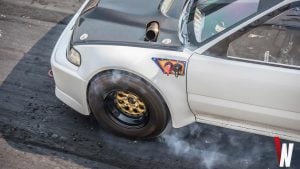
Track tires will give your car the ultimate performance for racing, but they are sometimes illegal to use on public roads, make sure your track tires are safe to use around town!
Off-road Tires
Off-road tires are sometimes referred to as all-terrain (A/T) or mud- terrain (M/T) tires. They’re tires that specialize in unstable surfaces. You can often find them on trucks or SUVs that have been modified to tackle any condition.
A/T tires feature big chunky tread blocks, perfect for moving loose rocks and dirt allowing the tire to plough through the terrain. A/T tires are extremely versatile and are often found on trucks right out of the factory, their treads may even be approved for winter (stamped with the Alpine symbol).
M/T tires feature tread blocks that are extreme in size, these tires are for the most unpredictable surfaces nature can create. M/T tires can be risky to use on normal paved roads, their treads are so blocky that the rubber cannot properly make contact with the road, which can decrease grip. M/T tires are often so extreme that they can wear down very quickly, they also generate a large amount of road noise. It’s recommended only to use M/T tires when your Truck or SUV is exclusively used off-road.
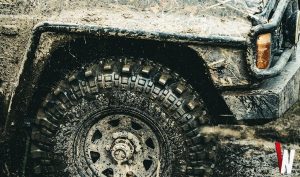
M/T or Mud Terrain tires are amazing for Off-Road performance, but their chunky treads can limit their performance on paved roads.
Visit Ratehub.ca’s car buying guide: How to buy a car
The Bottom Line
We get it, you can read about tires until your eyes are crossed, and you still might not know what to buy. That’s why we founded CanadaWheels. We’ve got support channels to help walk you through every step of the decision-making process. Our pros can help you purchase the perfect setup for your car – we’ll help you find your fit. We’re driven to demystify the tire industry and bring the best value families all across Canada. Take advantage of CanadaWheels’ support network, and we’ll make sure you have a great summer, winter, and all seasons in between.
ALSO READ
